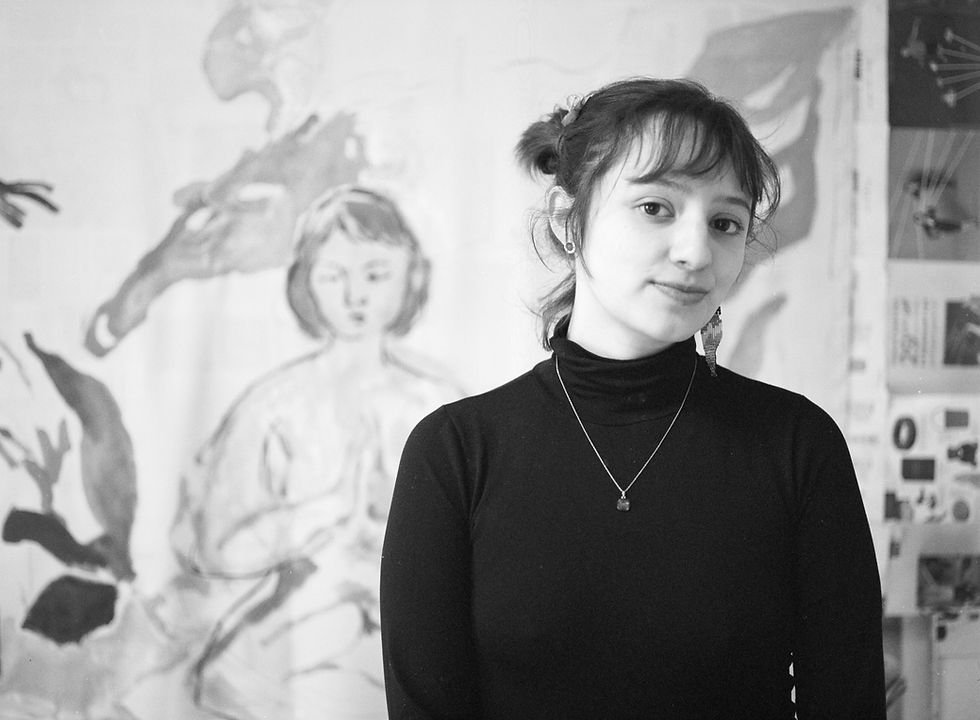CULTURE ‣Alejandra Álvarez Capturing 'La Danse': Matisse's Mural for the Barnes Foundation
- Phil

- Aug 23, 2023
- 3 min read

By Alejandra Álvarez, Senior Editor, Multi-Arts
Within the walls of the Musée d'Art Moderne in Paris resides a treasure with a captivating story that

deserves to be shared. The beginning of this tale takes us back to December 25, 1917, when the celebrated artist Henri Matisse arrived in Nice after making the deliberate choice to leave Paris. Amidst the scenic splendors of Nice, Matisse embarked on an exploration of a visual language profoundly shaped by the city's picturesque charm and the vast expanse of the sea—a deep source of inspiration for the painter. Matisse vividly expressed that upon encountering the enchanting light of Nice, he stumbled upon a wonder that would propel his artistic journey throughout the rest of his life.
Henri Matisse en 1933,
The successive years flourished with productivity until 1929, when the iconic French painter decided to take a break from painting. He embarked on a four-month sojourn to Tahiti, followed by his inaugural expedition to the United States. Upon arriving in the States, Matisse was 61 years old, and one of the events that would forever mark his painting was seeing the great New York for the first time.

Among the cities Matisse acquainted himself with, not far from the grandeur of the Big Apple, lay Philadelphia, where he encountered Albert C. Barnes, a multimillionaire and art collector. Barnes commissioned a monumental mural from Matisse for his art foundation, inaugurated in 1922. This mural, soaring 12 feet in height and spanning 25 feet in length, comprises three arches gracefully divided by two columns. It would be
La danse inachevée, MAM Paris, Salle Matisse, (https://museumview.eu/henri-
the largest work Matisse had ever painted, and he accepted it with enthusiasm, for despite his age, he was full of vigor.
Overflowing with life, concepts, and viewpoints, Matisse returned to Nice and secured a new, more expansive studio at 8 rue Désiré Niel. Methodical by nature, the artist embarked on an array of sketches, diligently pursuing the perfect composition. He emphasized the direct correlation between color quality and surface in his artwork—a perspective that posed a considerable challenge for this particular commission. Matisse recognized that colors effective on a small format required further adjustment to achieve equilibrium on a larger scale. But his mind was set on something; the mural was to represent a dance.
Thus, following rounds of sketches and gouache studies, Matisse attached a charcoal stick to a large

bamboo stick, employing it to inscribe directly upon the canvas. This modern technique would influence his subsequent creations. Matisse's creative process flowed in a continuous stream as he layered shades of blue and gray onto the canvases. However, midway through, he concluded that the composition lacked coherence. Numerous art historians have noted a substantial exchange of letters between Matisse and Barnes after Matisse
La danse de Paris, MAM Paris, Salle Matisse
accepted the commission and returned to Nice. The painter punctually informed Barnes of the needed modifications, and the initial rendition of "The Dance" was abandoned, serving as a base and foundation for the artist's experimentation with altering its composition.

Guided by his understanding and the realization that his smaller-scale drafts proved inadequate, Matisse opted for oversized cut-outs of his dancers, which he then pinned to the previously discarded canvas. These cut-outs could be moved and modified throughout the canvases, giving the painter a complete insight into his creation. He meticulously documented each transformation through photography, sharing the images with Barnes, who offered commentary and additional
Matisse’s finished mural at the Barnes foundation (http://blablaarts.over-blog
insights. Today recognized as "La Danse inachevée," this early incarnation of "The Dance" greets visitors of the MAM as they step into "La salle Matisse."
With a color palette of pink, blue, gray, and white already chosen for his mural, Matisse commenced work on his second endeavor. However, a catastrophe unfolded. On February 2, 1932, correspondences with Barnes revealed that the measurements Matisse had been relying upon were fundamentally flawed. By then, his second rendition of "The Dance" was nearly complete. Engaging in extensive correspondence with Barnes to rectify the measurements, Matisse embarked on his third and final rendition of the mural. The second mural, now known as "La Danse de Paris," can also be admired within the confines of the “Salle Matisse” at the MAM.
As Barnes grew increasingly impatient and insistent upon a studio visit, Matisse undertook his third and definitive execution of the mural in 1932. Progressing through numerous studies and charcoal adjustments, Matisse's assistant finally brushed the initial layer of color on March 21st, 1933. Later that same year, the completed painting arrived in Philadelphia. The esteemed Matisse had the opportunity to witness his achievement at the Barnes Foundation, where it remains housed to this day.
So, the next time you have the chance to visit the Musée d'Art Moderne in Paris, remember this story as you walk past the remnants of this chronicle that still reside in France.




Comments